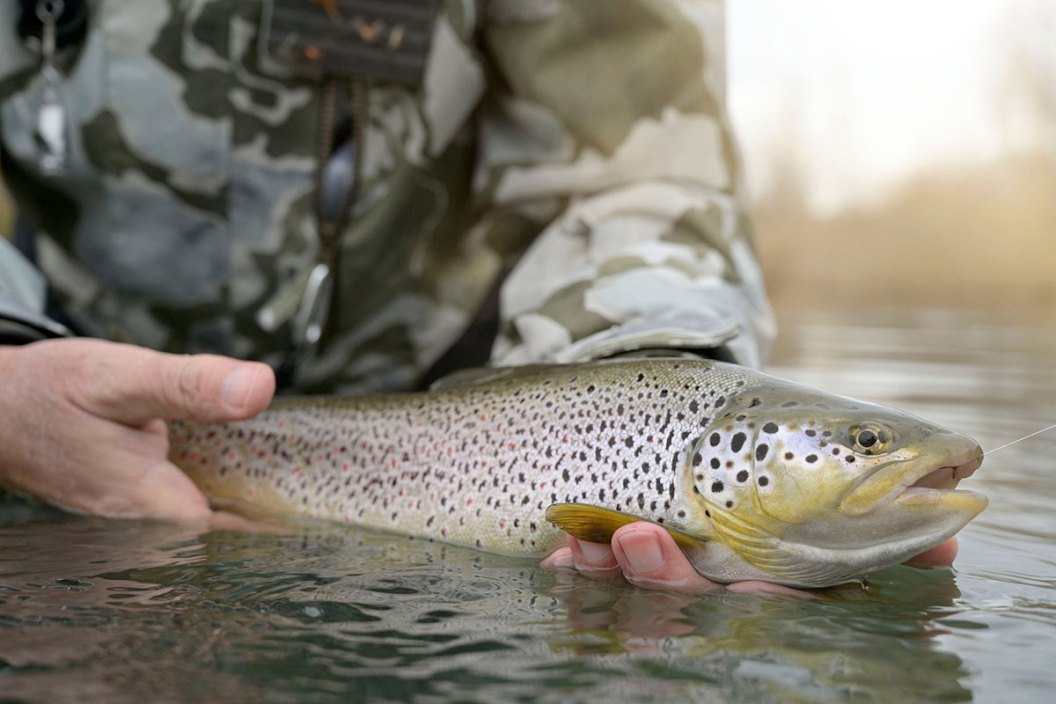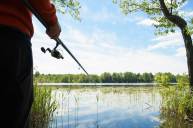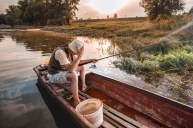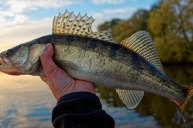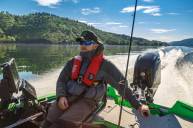Winter trout fishing is the reason why so many anglers keep their outfits rigged during the cold months.
If you're even remotely the adventurous type, and you like a challenge, then get up and start thinking about all of the winter trout fishing that you're missing out on.
Besides having the river, stream, or other open water mostly or all to yourself, you may just find out that you're a really good trout fisherman since the winter bite is a slower, more sophisticated one that demands a higher skill level and attention to detail.
We understand that getting out of the house to go and stand in some running water at this time of the year isn't always the easiest choice to make. However, those who do can find themselves in the thick of some of the best fishing of the season, and will get to do it without elbowing into the middle of the spring fishing crowd.
Since so many things in nature go into hibernation mode at this time of the year, things slow to a crawl and you will have to think like the trout that you're chasing. In other words, chill out.
It stands to reason that quick stripping streamers or burning a small jointed Rapala through the water isn't going to get a rise out of anything (no pun intended), but for those who can think like a fish and slow their pace, good times are ahead.
For fishing gear to catch then in winter and the rest of the year, check out Bass Pro Shops.
Winter Fly Fishing
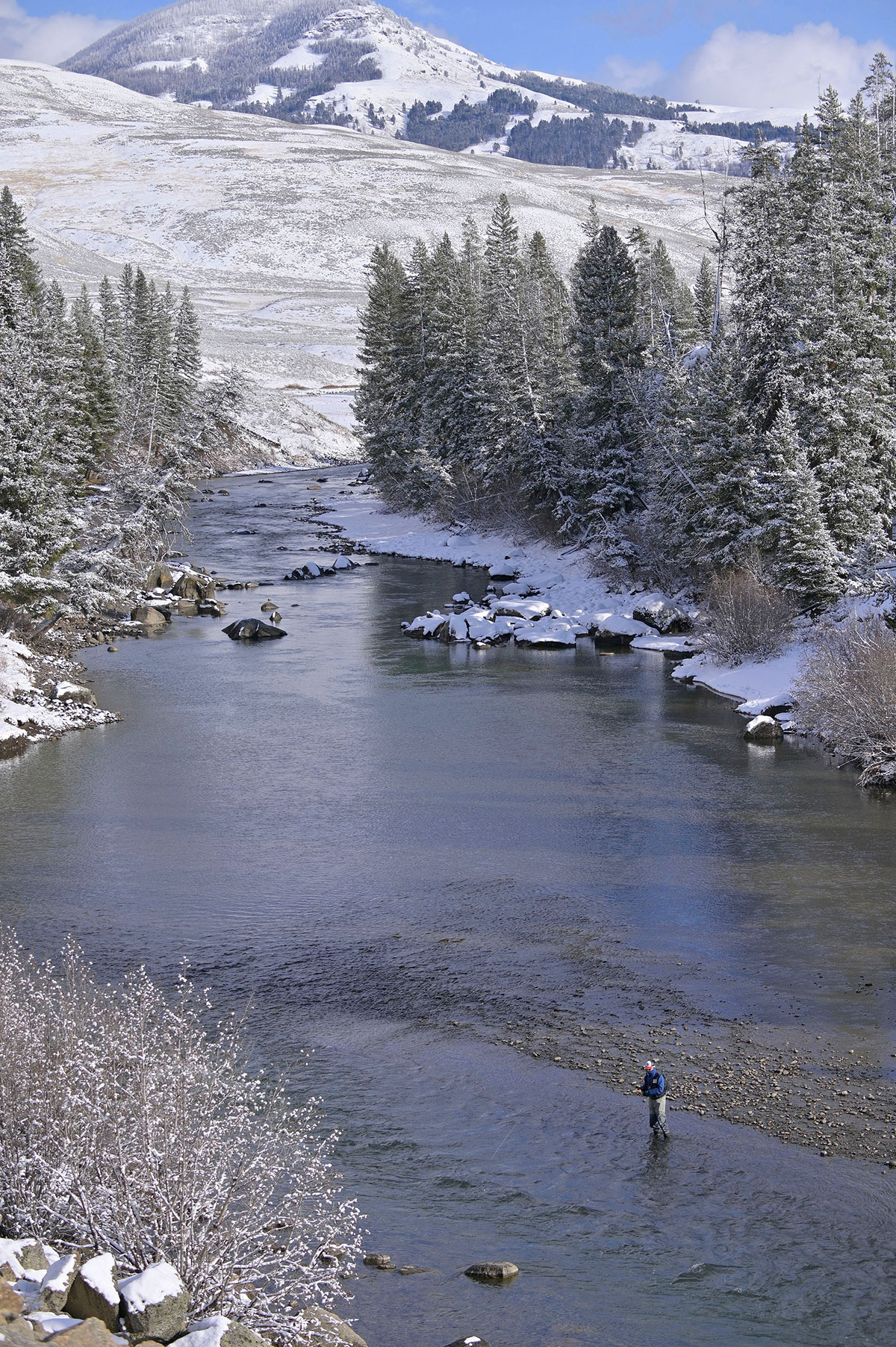
Since trout are more sluggish when it's cold, it is wise to choose not only warm days with plenty of sunshine, but the warmest part of the day you choose to go. It's the opposite in spring and summer. The high sun can make fish more wary than they already are, so consider slow movement, camo clothing, and stalking when it's possible. In the winter, fish are more eager to feed right after cold snap.
This is not yet the time of year to match the mayfly hatch or to ply terrestrials like the wooly bugger or an ant imitation, but don't put away the fly rod just yet. Catching trout in the coldest weather is as much an effort in staying warm as it is trying to find the trout, but once you do you'll still want to use the lightest tippet or line to fool wary, slow moving fish.
Nymphs are a staple of winter fly fishing and are used in various ways, but the dead drift is most effective at this time. Just choosing the right pattern is one thing, but making sure that the presentation is correct is the best course of business since you will want to put it on the trout's nose.
Even midges and smaller black stonefly patterns will take fish in the winter, but downsizing is everything. if worse comes to worse and you just need to try something else, dry flies and even dead drifted streamers may be just what the trout doctor ordered, but slow and steady wins this race.
As far as locations go, tailwaters stay fairly consistent in terms of temperature, even in the cold waters of winter. The only two similar things about fishing these areas in the winter are the fact that these are quality locations to find fish, and that every other angler in the area knows about it too.
Other than that, be on the lookout for slower, deeper pools near the flow of the stream or river where fish can rest and use only a modicum of the energy that they normally would.
Winter Trout Fishing With Traditional Gear
You're almost certainly talking about an ultralight spinning rod and reel combo here, unless you are targeting winter run steelhead. Even then, you will need to be thinking about lighter than normal versions of the gear you will use when the spring spawning run is in full swing.
Fluorocarbon line no greater than 10 pound test really disappears in the cold, clear water and also gets a single salmon egg or sucker roe down where the fish are resting. Trout are opportunists this time of year, and won't chase down food. Basically speaking, they simply want to open their mouth and let it slide right down their throat.
One tiny split shot about two feet above the bait on a single #6 or #8 octopus hook with a small strike indicator is easy to cast upstream and follow back towards you with the current. For those that just don't want to stand there and watch bait float by, try casting small spinners such as a Mepps 0 or 1 with a single hook tipped with an egg or two.
Some might consider the longer ultralight rods to be too whippy to use to cast or float bait with a spinning reel. It's makes sense, because you're not there to rip crankbaits for bass. Just keep the offering in the strike zone with some finesse. It's also a good thing to remember that on some winter trout fishing grounds, the use of live bait is prohibited. Put your finer angling skills to the test, and slow things down to learn about what works and what doesn't.
Opportunistic Trout Fishing
When water temperatures begin to drop and the certainty of the winter months is nearing, angling for trout becomes a different game, but cold weather doesn't have to mean only wading in trout streams.
In many areas, particularly in or near inner cities and some fish hatcheries, anglers can get in on the action through stocking efforts. Many states that don't have native trout use this technique, and the bait regulations usually open up the opportunity to allow kids to catch them easily too.
The name of the game is to almost always keep these fish and bring them home for dinner. A fresh-caught meal in the middle of winter can certainly hit the spot.
Maybe the most important item to remember on your winter trout fishing trip is the need for safety. The water column may be the same or deeper, but your waders or walking boots are still the last defense against getting wet in some extreme conditions. Tailwater fishermen need to be aware of rising waters at all times of the year, and everyone should pay close attention to all other issues like icy rocks and hidden, underwater obstacles.
Be sure to wear necessary gear, avoid going alone, and have a way to communicate with emergency responders if needed.
Take other small steps to get the most out of these seemingly offseason chances to fish. Keeping your day bag or backpack filled with extra food and cold weather gear, including extra socks, is key to making the most of having some down time in the winter to go fishing.
But don't forget the camera, because the fishing can be better than you'd expect, and the memories will last a lifetime.
Looking for a little more or even hot lunch for your hunting blind? Follow my webpage, or on Facebook and YouTube.
NEXT: 5 UNEXPECTED PLACES TO CATCH A FISH IN THE WINTER
WATCH
